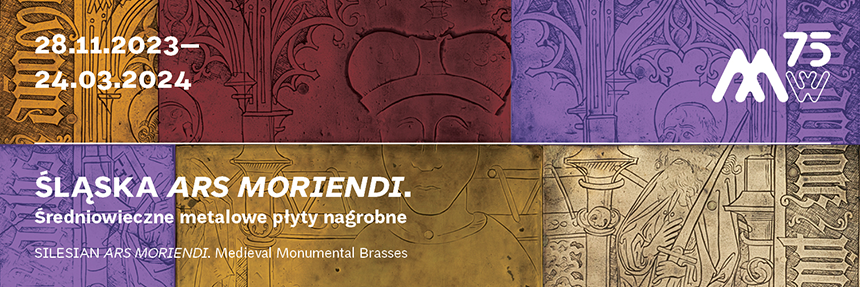Fourteenth-Century Monumental Brasses
A group of fourteenth-century monumental brasses, with brass appliques mounted on stone slabs, may be linked to a Silesian workshop. The appliques were fashioned of sheet brass and decorated with flat and relief engraving The figure of the deceased person, coats-of-arms, the architectural arcade framing the figure, and inscriptions were all rendered in metal. Every applique was cut to shape and mounted on the stone slab using tar as an adhesive. Some appliques were assembled of multiple elements: individual letters, coat-of-arms, and arcade was separately mould-cast using pattern books. This method reduced costs and labour as the letters and heraldic motifs could be produced in multiples when needed.
The same technology was also employed in the somewhat later monumental brasses of Bishops Nanker (d. 1341) and Stephen of Lubusz (d. 1345) in Wrocław Cathedral. In 1950, archeologists found more slab graves of Bishops of Wrocław: Jan Romek (d. 1301), Henry of Wierzbno (d. 1310), and Apeczko of Ząbkowice (d. 1352). The slabs were originally fitted with brass appliques.
Although similar to the brass monuments in Lubiąż in terms of technology, the Wrocław monuments are composed somewhat differently: the figure is smaller but its architectural framing relatively larger and more elaborate. The changing relation between the figure and background was part of the evolution of monumental brasses, likely a stage in the workshop’s development, and the new arrangement continued in the second half of the fifteenth century.
